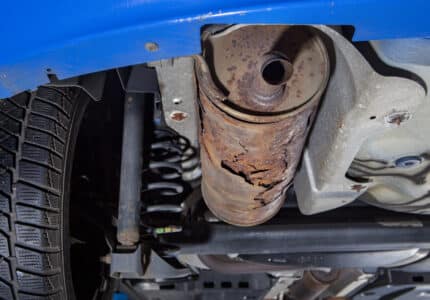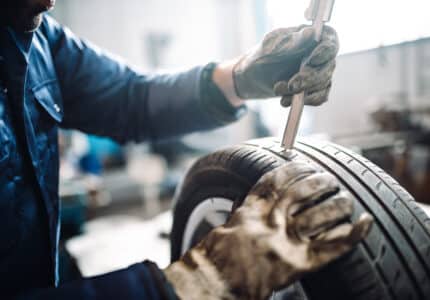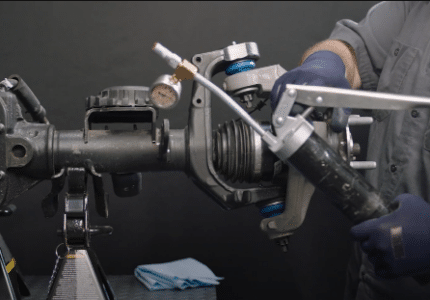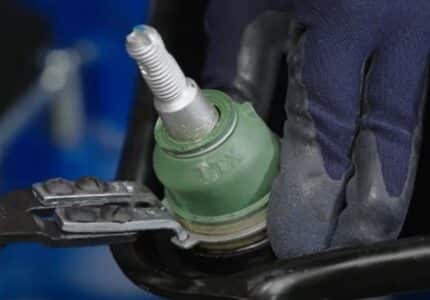The Great Debate - Is OEM better than aftermarket replacement suspension parts?
Technicians love to debate about what is better when it comes to replacement suspension parts. One camp says that the OEM parts are the best because the OEM designed and tested the component. Another camp believes that improvements can be made to the original part by the aftermarket. Who is correct?
The truth is replacement suspension components can be improved in the field. Many potential weak points are discovered long after the vehicle has been driven off the dealer’s lot and the warranty has expired.
The OEM is concerned with weight, initial quality and cost. In contrast, the aftermarket is concerned with creating a solution that can increase the longevity of the repair. How are aftermarket parts manufacturers improving parts? It is the small improvements that add up to significant gains for the technician and customer.
Something as simple as increasing the size of the ball and socket can directly impact longevity and performance. A larger joint reduces contact pressure between the socket and the ball by spreading the load over a larger area. The result is a joint that will have a longer service life.
 The material the ball and socket are made of can also have an impact. Most OEMs today will use a socket or bearing made of plastic, or another common term, “polymer.” The material can withstand the forces applied by the suspension, but it needs three things to last. The first item is the boot. The boot needs to be able to seal the joint under hostile conditions found inside the wheel well. Second, the finish of the ball must be polished to a specific finish that works with the polymer socket. Third, the grease inside the socket is the secret sauce that makes it all work. The lubricant found inside sealed ball joints is not petroleum-based grease. It is a synthetic grease engineered to be compatible with the polymer socket and boot. It is also engineered to withstand the loads of the suspension.
The material the ball and socket are made of can also have an impact. Most OEMs today will use a socket or bearing made of plastic, or another common term, “polymer.” The material can withstand the forces applied by the suspension, but it needs three things to last. The first item is the boot. The boot needs to be able to seal the joint under hostile conditions found inside the wheel well. Second, the finish of the ball must be polished to a specific finish that works with the polymer socket. Third, the grease inside the socket is the secret sauce that makes it all work. The lubricant found inside sealed ball joints is not petroleum-based grease. It is a synthetic grease engineered to be compatible with the polymer socket and boot. It is also engineered to withstand the loads of the suspension.
All three items must be in perfect working order for the joint to function. If the boot is torn, water can enter the joint and displace and dilute the grease. Even if the boot is intact, heat from the brake system and friction in the joint break down the grease and plastic socket over time. Without the highly-specialized grease, the ball will damage the polymer material. This results in play in the joint. Engineered replacement options can make the joint serviceable. To do this, they use sintered metal for the bearing. The ball or stud is still made from high-strength steel and polished to a mirror finish. Grease in these joints is injected through a Zerk fitting in the base of the joint. The grease does not have to be a high-end synthetic grease. Grease with a NGLI GC-LB or #2 rating can be used.
Like the polymer joint, the grease lubricates the surfaces of the ball and socket. But, when grease is injected into a serviceable joint, it flushes out contaminants and replaces worn-out grease when the joint is greased. The sintered metal bearing is also porous, allowing grease between the surfaces at a microscopic lvel. If the joint is serviced at regular intervals, the joint can last three times longer than a polymer joint, according to one suspension component manufacturer.
Let’s say there is an application with a lower control arm that places the ball joint near the brake rotor. As the joint and the grease inside are exposed to heat, it will break down and no longer lubricate the joint. Also, the plastic insert can be damaged by heat. A greaseable sintered metal joint for this application may help extend the joint’s life by replenishing the grease.
For some applications, a sealed joint might be more suitable for the customer and vehicle. If the application is low-stress or doesn’t have the space for a Zerk fitting, a sealed joint might be the best choice. But, if a manufacturer has a greaseable joint or other suspension or steering component in the catalog for an application, it is probably there because the vehicle can benefit from improved sintered metal joints that can be greased.
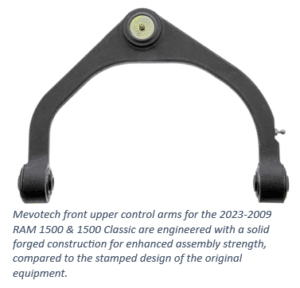
Another area of improvement can be the construction and materials for a suspension component. Control arms can be cast, stamped or forged.
Stamped steel has been used for decades. The process typically takes a sheet of steel and stamps it into the shape of the control arm with multiple steps and welds. The stamping is then typically finished in anti-corrosion paint. Steel can be a strong material, but it is prone to corrosion. Corrosion can attack the stamping, especially in areas where water and debris can accumulate. Also, if the anti-corrosion paint has separated from the steel, corrosion is not far behind. Some replacement parts companies will use an advanced coating that can withstand more abuse than a layer of paint.

Cast control arms have been around for just as long as stamped control arms. Cast control arms can be iron or aluminum. The casting can also be forged to further increase the piece’s strength.
Is casting better than stamping? It depends on the application. Some replacement parts will replace the stamping with a cast piece. The switch can extend the life of some parts that failed due to corrosion. For some applications such as pickup trucks or SUVs, the switch can give increased rigidity and allow for the use of an improved ball joint design that could be stronger and more robust than the original.

A final point is just how easy are these parts to install? An OEM part usually will not come with new replacement fastening hardware – bolts and nuts are extra cost line items. Not only that, in some cases, components are not available separately. For example, on the newer Jeep Cherokee, the front lower ball joint is not available from the OEM, an entire steering knuckle must be purchased. Here is where aftermarket solutions can have the advantage, making otherwise unavailable parts available to the technician.
 Engineered aftermarket solution providers go one step further- providing novel tools to help install their parts.
Engineered aftermarket solution providers go one step further- providing novel tools to help install their parts.
In debate classes, they teach students to reframe an issue in terms the opposition can understand. With suspension components, the topic can be framed as what are the needs of the OEM and what are the needs of the shop, technician and consumer.
For OEMs, the pressure to deliver a vehicle that is fuel efficient can often cause compromises in the longevity of the components. Also, most suspension components are covered under a 36,000-mile warranty. These pressures of weight and price can influence the designs of the components.
In the aftermarket, the pressures are on the reputation of the brand behind the parts. Premium aftermarket manufacturers realize that if they can supply suspension components that will outperform the original and are easy to install, they will create loyalty for the brand.

